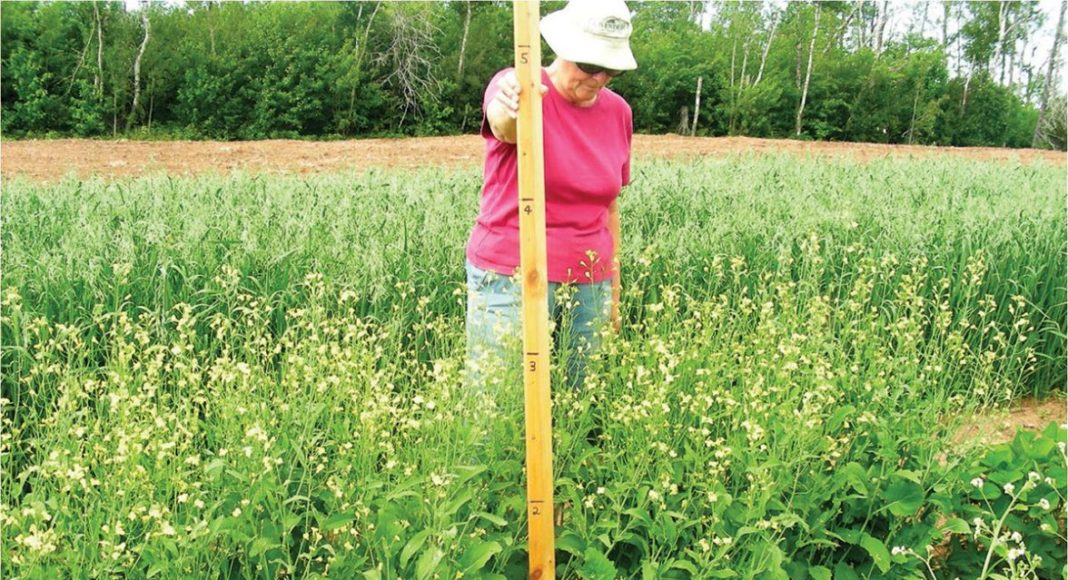[deck]Recent research indicates that liming can improve soil health, increase pH levels–and boost yields.[/deck]
Recent liming research completed in Prince Edward Island shows that applying lime to the soil does not increase the occurrence of scab when scab-free seed is planted. Robert Coffin, president of Potato Consulting Services Inc., conducted the lime research trials on his farm near Green Bay, P.E.I. last year.
Scab, a bacterial disease, is a major problem worldwide that can impact tuber quality. Coffin’s liming trials generated much interest, as very little research has been conducted on lime in recent years. Coffin’s research addressed growers’ concerns that the severity of tuber scab increases when large quantities of lime are added to acidic soil.
“When we planted clean, scab-free tubers, the lime did not increase the amount of scab on the new tubers,” he says. “However, and planted really scabby tubers, when we applied lime, it did increase the scab on the new tubers.”
Coffin’s trial, which was conducted in a field with low pH (4.5 to 4.7), also showed that lime has beneficial effects the first year it is applied, and positive effects on subsequent crops as well, such as barley and soybeans. He recommends using lime if the soil is highly acidic, as it will improve the soil’s pH and increase yields.
Coffin, who is currently conducting a large scale liming research trial for the Brookville Lime Company, obtained the two lime samples, calcitic and dolomitic, for his 2010 trial from the Saint John, N.B.-based company.
Sales representative Glen Swallow says the Brookville Lime Company supplies a large amount of agricultural limestone to growers throughout the Maritime provinces and New England. The soils in Atlantic Canada are naturally acidic and have a pH of 4 or 5, making it difficult for crops to grow, says Swallow. “Lime helps increase your pH level,” he says. “And once you have your pH in the 6 or 7 range, the efficiency of the fertilizer you use increases drastically.”
Growers in Atlantic Canada can expect to pay between $40 and $125 per tonne for the lime, depending on the hauling distance and spreading costs, says Swallow, noting lime is more cost-effective than other magnesium sources.
Widespread Appeal
Growers across Canada are using lime to improve the pH levels of their soils. Randy Baron, a farmer from Carberry, Man., has been applying lime to his fields for about 10 years. “The lime alone has provided us with improved pH levels throughout our fields,” he says. “[Liming] has consistently given us a good, uniform crop.”
Baron applies lime once every three years following the potato harvest. He receives the lime from the City of Brandon at no cost, and has to pay approximately $8 per tonne for application, which is done by Notre Dame, Man.-based company Assiniboine Injections. This arrangement is a win-win for both the growers and the City of Brandon, says Baron, who estimates that about 80 per cent of the growers in his area are using lime.
Baron has been working with crop consultant Trevor Thornton of Crop Care Consulting Ltd. Thornton says his Manitoba growers have applied approximately 12,000 to 13,000 tonnes of lime each year on their fields for the past several years, and their soil pH levels have improved.

Benefits of using lime include better nutrient uptake, which is reflected in improved yield and potato quality, says Thornton, noting that his growers are also seeing these benefits in rotational crops. “This is a multiple-year programmed approach. The soil didn’t get that way in one year, and we’re not going to fix it in one year,” he says.
Thornton recommends liming to most of his growers. It’s still a fairly new idea to some, but he expects the use of lime to grow in popularity in coming years.
Thornton works with A & L Canada Laboratories, who have also completed some liming research. Research conducted by the London, Ont.-based company in 2007 yielded similar results to Coffin’s liming trial.
According to A & L president Greg Patterson, calcium levels must be increased in the soil, but growers hesitate to lime potato ground because of scab.
“The research that we did showed that it was not pH or calcium that caused scab,” he says. “However, if other nutrients such as potassium and magnesium were out of balance, we had a problem with increased scab on potatoes.
“We now have a lime program that we use in the field on a regular basis, where we lime to a base saturation of 40 to 45 per cent calcium until we correct the balance of potassium and magnesium in the soil,” he says, “and then we increase our lime applications when that’s in check.
“Your pH is number one. If it is not right nothing else is going to work properly,” says Patterson. “Potatoes can tolerate lower pHs but they do much better in a higher pH.”











